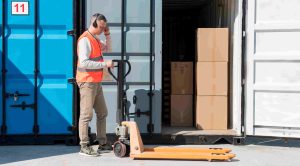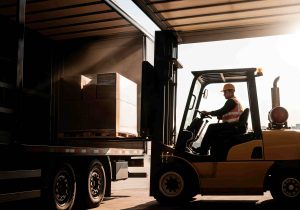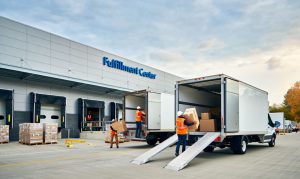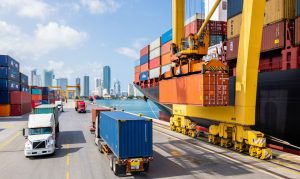E-commerce in the United States has reached a level of maturity where delivery speed is no longer a differentiator, but a basic expectation. However, in such a vast and diverse country, rural areas continue to pose a major logistical challenge: lower population density, greater distances, and transportation infrastructure that lags behind urban standards. It’s in this very scenario that two giants Amazon and Walmart have launched a strategic battle to win over rural consumers with fast and efficient deliveries.
This rivalry is far from trivial: according to the U.S. Census Bureau, more than 14% of the U.S. population lives in rural areas. For these communities, access to reliable delivery services can mean the difference between obtaining or lacking essential products. Beyond customer satisfaction, the competition between Amazon and Walmart is redefining the future of rural logistics and its implications for local providers.
Amazon: Technological infrastructure at the service of speed
Amazon has been a pioneer in transforming logistics through technology. Its network of fulfillment centers, combined with advanced demand-prediction algorithms, allows it to position products close to customers even before orders are placed.
For rural areas, Amazon has deployed several strategies:
- Amazon Air: its cargo air fleet delivers products quickly to regional airports near rural communities.
- Lockers and pickup points: installed at gas stations, pharmacies, and local stores, these allow customers to collect their orders without depending on door-to-door deliveries in hard-to-reach areas.
- Investment in autonomous last mile: ongoing tests with drones (Prime Air) and delivery robots to cut costs in long, low-density routes.
- Massive data use: by analyzing rural buying patterns, Amazon anticipates demand and moves inventory in advance to nearby centers.
Through these tactics, Amazon aims to uphold its same-day and next-day delivery promise, even in regions where infrastructure makes it challenging.
Walmart: Leveraging its physical retail advantage
While Amazon dominates on the tech front, Walmart holds a unique card: its physical presence. With more than 4,700 stores across the U.S. many of them in rural or semi-urban areas Walmart has turned its retail footprint into a hybrid logistics infrastructure.
- Stores as micro-distribution hubs: local outlets function as last-mile hubs, enabling online orders to be fulfilled directly from the nearest Walmart.
- Same-day delivery services: powered by its transport network and partnerships with platforms like DoorDash and Postmates.
- Direct-to-home rural delivery: Walmart has expanded its InHome Delivery service, where authorized staff place orders directly in customers’ refrigerators or pantries even in remote areas.
- Capitalizing on rural density: by being physically embedded in many communities, Walmart avoids some of the costs of long-haul distribution from distant centers.
Walmart’s strategy emphasizes reinforcing its long-standing relationship with rural America, offering not just speed but also trust and familiarity.
The logistics impact of the Amazon vs. Walmart rivalry
This rivalry is not just about who delivers faster it’s about how both companies are redesigning rural logistics in the U.S.
- Operational efficiency
Amazon invests heavily in cutting-edge technologies (drones, AI, automation), while Walmart maximizes its existing footprint. Both approaches target one thing: lowering per-delivery costs in sparsely populated regions. - The rural last mile
The hardest challenge remains last-mile delivery in low-density zones. Expect to see hybrid solutions: community lockers, collaborative deliveries, and more reliance on autonomous tech. - Pressure on local providers
Rural carriers and suppliers face mounting pressure to meet stricter standards of speed, accuracy, and cost. Many will need to digitize, adopt tracking tools, and boost responsiveness to remain viable partners. - Shifting consumer expectations
Rural consumers who once tolerated multi-day waits are now demanding the same speed urban shoppers enjoy. This shift raises the bar across the entire logistics ecosystem.
Opportunities and risks for local providers
The Amazon–Walmart rivalry is both a challenge and an opportunity for local providers.
- Rising demand for regional transport: covering rural routes creates space for partnerships with local carriers who know the terrain and can offer flexible solutions.
- Accelerated digitization: integrating with Amazon or Walmart forces small providers to adopt management software, real-time tracking, and higher safety standards.
- Risk of dependency: subcontractors may lose independence, working under tighter margins dictated by the giants.
- Uneven competition: those who fail to adapt will be left behind, unable to meet new speed and efficiency expectations.
The future of rural deliveries in the U.S.
The Amazon vs. Walmart showdown is more than a business rivalry it’s a testing ground for the future of rural logistics. Likely developments include:
- A massive rollout of rural microhubs, whether in stores, lockers, or community pick-up points.
- Gradual deployment of drones and autonomous vehicles, starting in rural zones where regulation is looser and traffic less complex.
- Deeper integration with local providers, who will be essential to cover the most remote areas.
- The consolidation of a unified rural customer experience, with fast, secure, and traceable deliveries.
Conclusion
Rural logistics in the U.S. is being redefined by the competition between Amazon and Walmart two giants with different strengths but the same goal: winning rural America with high-speed deliveries. While Amazon leans on global tech innovation and predictive logistics, Walmart leverages its physical presence and close ties to local communities.
For local providers, this new landscape brings both opportunities and risks: those who adapt and adopt technology can thrive as part of advanced supply chains; those who don’t may struggle to survive.
What’s clear is that the future of rural deliveries will be faster, more connected, and more demanding than ever before.




